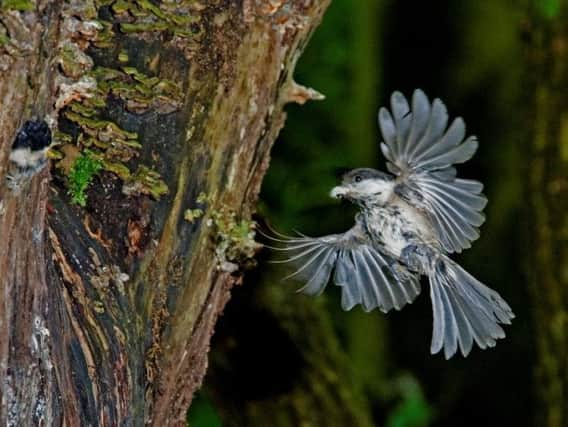Endangered bird thrown a lifeline


Willow tit numbers are still a cause for concern for the Royal Society for the Protection of Birds across the UK.
But not only has the number of breeding pairs stabilised in Wigan but there has been a slight increase, according to the Wildlife Trust for Lancashire, Manchester and North Merseyside.
Advertisement
Hide AdAdvertisement
Hide AdTwo hundreds and six pairs have been spotted in the wetlands, in a recent survey covering their territory, which stretches into the Yarrow and Lostock valleys in Salford and Bolton.
Back in 2005, the numbers had dropped to just 100, due to habitat loss and climate change.
Work to safeguard willow scrub across Wigan Marshes, and protect at-risk areas from development, has been ongoing since 1999, under the trust’s guidance.
Mark Champion, the trust’s Wigan Reserves manager, said: “With 2,000 pairs in the whole of the UK, our willow tits represent more than 10 per cent of the total. Numbers have been in freefall for this beautiful bird so this is really good news.
Advertisement
Hide AdAdvertisement
Hide Ad“The largest concentration of willow tits in the region is in the Great Manchester Wetlands, centred on Wigan and then stretching out to Bolton and Salford.”
Grey willow and elder are important trees for the willow tits, and trust rangers have worked to maintain their presence across the Wigan reserve, alongside birches.
The trees produce vital seed crops in winter, to promote the survival of the birds.
Mark added: “Willow tits have declined because of climate change and habitat loss, particularly losing that connectivity between sites. Dead wood within woodlands is vital willow tit habitat and it is risked when people want to tidy these areas.
Advertisement
Hide AdAdvertisement
Hide Ad“Well meaning woodland improvements are often as bad for willow tits as retail car parks and warehouses removing the woodland completely.
“Even small housing developments can break the link between willow scrub areas so vital to our willow tits. It has to be dense thicket with lots of structure and bramble. This is an unloved habitat – no one hugs a willow.”
Part of the recovery work by the trust and its volunteers has been creating nesting logs for the birds.
A tree can be cut into logs, which are then attached to other trees. The logs rot and the willow tit candig into the rotten wood to create a nest.
Advertisement
Hide AdAdvertisement
Hide AdThis has proved to be a success with many of the logs provided by the wildlife trust becoming homes to willow tits.
Predators like the great spotted woodpecker and the grey squirrel remain a threat to willow tits and their rivals, great tits and blue tits, are also invading their territories.